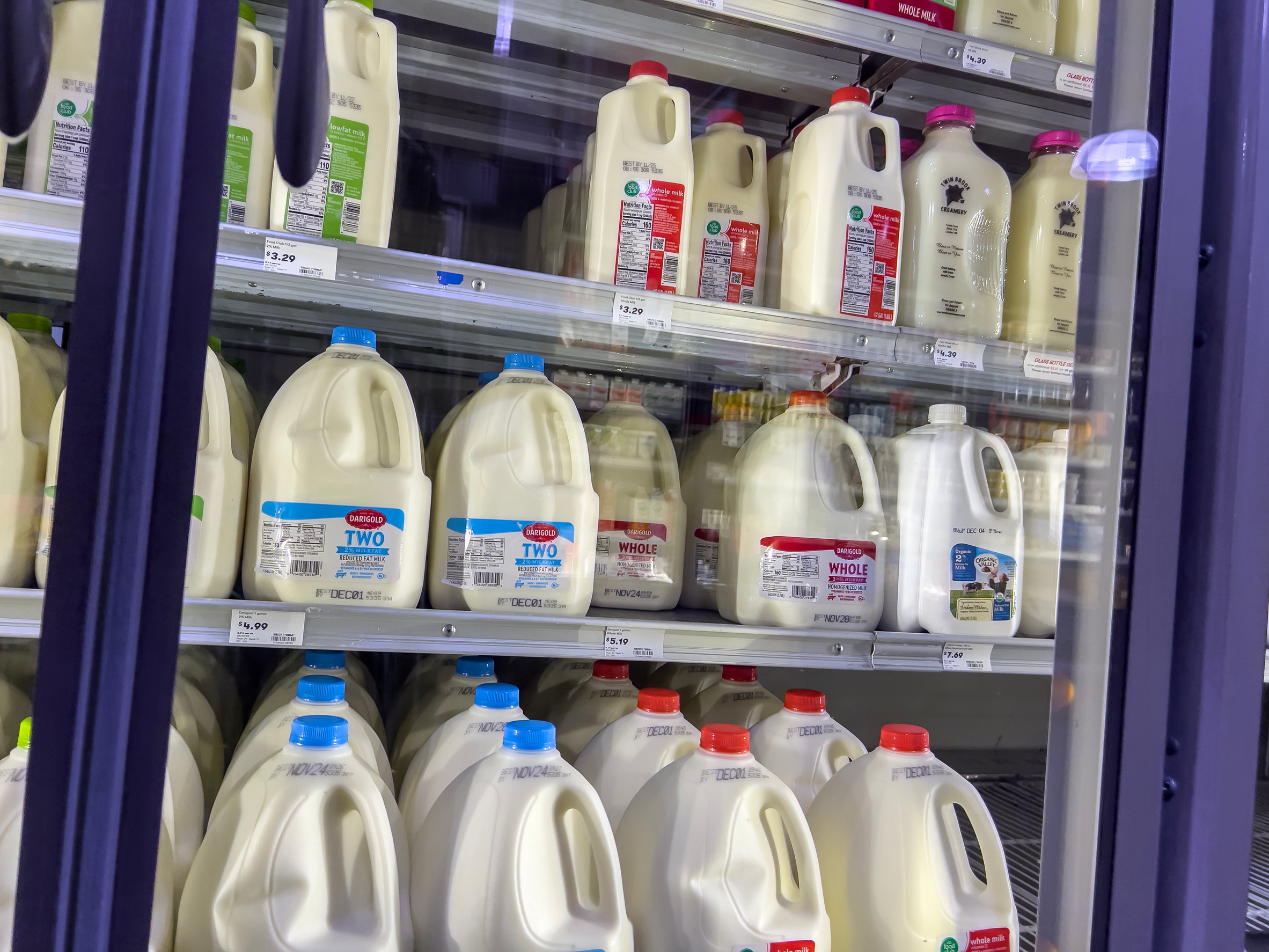
Have you ever walked into your usual grocery store, only to find that your favorite cereal, soda, or pasta isn’t where it used to be? That’s not forgetfulness—it’s a strategy. Stores regularly move certain products around so you end up wandering more, spotting more, and buying more than you planned. By knowing which items are moved daily (or frequently) and understanding why, you’ll be better armed to avoid impulse buys and stay on budget. Here are 7 product types retailers shuffle often—and tips on what to watch for.
1. Basics Like Milk, Bread, and Eggs
These staples are often placed at the back of the store, forcing you to walk past other tempting items. Retailers do this so you see more products on your way, encouraging extra purchases. Even when the store restocks, you’ll notice milk or bread isn’t always in the same spot—sometimes slightly shifted to edge shelves or moved within its section. Because of their high demand, these items get rotated daily or moved longer distances. Knowing this, you can plan your shopping route or ask store staff directly to avoid wandering into impulse zones.
2. Promoted or Discounted Items
Items on special promotion are frequently shifted around to draw attention. One week they might be end-cap displays, the next in the middle aisle, or near checkout lanes. These moves help retailers highlight “deals” and increase visibility. Frequent changes make shoppers see them as fresh, even if the deal has been going on for days. If you’re after a promotion, look around—those signs and displays are likely repositioned daily to catch your eye.
3. New or Seasonal Products
Whenever something new hits shelves—pumpkin spice, holiday chocolates, novelty sodas—it tends to move around a lot. Stores are experimenting to see where these products sell best. Sometimes they’re placed near related items (like baking goods), sometimes near snacks or checkout. Because consumer response is mixed, repositioning helps management test what layout works. If you see a seasonal display that seems to wander, that’s exactly why.
4. Impulse Items at Checkout
Candy, breath mints, energy bars, and small packaged snacks are classic “move me” products. To maximize impulse buys, retailers change what’s right at the registers—sometimes moving items, sometimes swapping out displays altogether. These items get shifted daily depending on what the store thinks will catch your eye (or your hunger). Because the checkout lanes get heavy foot traffic, even small changes in positioning can lead to a bump in sales. Being aware of these “front lines” helps you decide whether to resist or indulge.
5. Frequently Bought Staples That Trigger Over-Spending
Staples like cereal, laundry detergent, paper towels, and bottled water are often placed at eye level or in sections that force you to pass by other tempting goods. Stores may move them slightly—higher, lower, more toward an end-cap—so that they align with other high-margin items. These are strategic placements to get you into certain aisles where you might see items you never thought you needed. As they are staples, you’ll buy them anyway, but the extra exposure makes you more susceptible to grabbing extras. Keeping a list and sticking to it helps you avoid this trap.
6. High-Margin Partner Items Near Complementary Products
Stores often “cross-merchandise”—putting chips next to salsa, barbecue sauce near grilling tools, or pasta sauces near pasta. Items like these are shifted around to be adjacent to items shoppers are already looking for. If your store is rearranging where pasta is, you’ll notice the sauces and spices nearby suddenly change too. These moves encourage bundling: you buy more when items you need are near something you spot along the way. Overall, these high-margin items get a lot of dynamic placement to pump up sales.
7. “Featured” Health Foods or Trend Items
Retailers like to highlight what’s trending—keto snacks, plant-based milks, exotic fruits—and these often move around to test what spot makes them fly off the shelf fastest. One day they might be at the front of the health aisle, the next in the produce section, or near the checkout for trial purchases. These products’ visibility is manipulated so shoppers perceive them as important or new. Moving them frequently keeps them fresh in customers’ minds and encourages “try me” behavior. If you go into a store and keep seeing the same trendy product in different spots, that’s by design.
Why These Shelf Tricks Matter to You
The more often retailers move products around—especially impulse items, promoted deals, and staples—the more likely you are to spend extra without realizing it. Moves make familiar shopping feel unfamiliar, which leads you to wander, browse, and pick up “just in case” items. Being aware of these patterns can help you stick to your list, avoid temptation zones, and plan smarter. The truth is, shelf placement is one of the most powerful tools retailers have, and it works. By recognizing the tactics, you take back control of what ends up in your cart.
Have you noticed certain products in your store moving around unusually? Share which ones and how you avoid buying extras in the comments!
You May Also Like
- Checkout Games: 8 Tricks Cashiers Use That Can Change Your Total Without You Noticing
- 10 Sneaky Restaurant Tricks That Cost You More Money
- What the Position of Food on Shelves Really Reveals About Retail Tricks
- 8 Expiration Dates That Are Just Marketing Tricks
- 9 Barcode Tricks Retailers Use to Change Prices Without You Noticing
The post Shelf Shenanigans: 7 Products That Are Moved Daily to Trick You Into Buying More appeared first on Grocery Coupon Guide.







